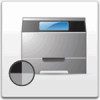Lexmark Monochrome Laser Complete Printer Reference (1.7 MB) - Page 173
Moving a disk from one printer to another, printer and install it in another printer
 |
View all Lexmark Monochrome Laser manuals
Add to My Manuals
Save this manual to your list of manuals |
Page 173 highlights
Occasionally, however, circumstances can prevent a spooled job from printing. This may happen if: • An incoming print job is larger than the free space available in the job buffering partition. The printer deletes the job from the hard disk. • Someone selects Cancel Job from the Job Menu while a job is being spooled. This flushes the current job. None of the remaining jobs on the disk or in the link buffers is deleted. They are printed after the printer resets. • A job stored on the disk never receives a correct End-of-Job command. If the Jam Recovery, Page Protect, and Collation features are normally set on in your standard printer configuration, they should be left on when job buffering is enabled. Otherwise, the job buffering code does not receive a correct End-of-Job command in the event of an error. The job is considered incomplete and is not printed. To flush jobs already stored on the disk, you must issue the appropriate NPA commands through MarkVision. You cannot delete jobs stored on the disk from the operator panel. Moving a disk from one printer to another Unlike the majority of printer settings, job buffering settings are stored directly on the hard disk, not in the printer's nonvolatile memory. Therefore, if you remove a disk from one printer and install it in another printer, the job buffering settings are automatically established for the new printer. Suppose, for example, that you set a 60% partition for job buffering and then enabled the function on the parallel and network ports. If you turn off the printer and transfer the disk to another printer, those settings automatically take effect on the new printer. The first printer no longer has job buffering enabled on any port. This means that if a printer fails, you can remove the hard disk, place the disk in another printer, and print the jobs that are stored on the disk. Managing memory 173















